technology
Concrete
Concrete is made up of five primary constituents.
Water
Cement
Air
Fine Aggregate (FA)
Coarse Aggregate (CA)
The water and cement form a paste, which binds the aggregate into
a rock-like mass as the water and cement combine through a chemical
reaction called hydration. The paste also includes entrapped air
introduced by mechanical mixing and entrained air introduced by the
addition of chemical admixtures. The paste constitutes between 25
and 40 percent of the volume. The aggregate makes up the remaining
60 to 75 percent. Air in concrete varies from about ½ to 2 percent
in non-air-entrained concrete to about 4 to 8 percent entrained air
in concrete containing air-entraining admixtures.
FA, sometimes called "sand", is composed of particles that pass
the 4.75 mm (No.4) sieve. CA, or gravel, consists of particles
retained on or above 4.75 mm (No.4) sieve. Well-graded aggregate,
consisting of a wide range of FA and CA sizes, provides for
efficient use of the water/cement paste. Since aggregate makes up
most of the mix volume, it should consist of particles with adequate
strength and resistance to exposure conditions.
Concrete solidifies and hardens after mixing and placement due to
a chemical process known as hydration. The water reacts with the
cement, which hardens, bonding the other components together and
eventually creating a stone-like material.
Concrete is used more than any other man made material on the
planet. It is used to make pavements, architectural structures,
foundations, motorways/roads, overpasses, parking structures,
brick/block walls and footings for gates, fences, and poles.
Ready Mixed Concrete
Ready mixed concrete is a type of concrete that is manufactured
at a batch plant or factory, according to a pre determined recipe,
and delivered to a project site by truck mounted transit mixers.
This results in a precise mixture, allowing specialty concrete
mixtures to be developed and implemented on construction project
sites. The first ready mixed concrete batch plant or factory was
built in the 1930s, but the industry did not begin to expand
significantly until the 1960s, and it has continued to grow since
then.
Ready mixed concrete is option preferred over on-site mixing
because of the precision of the concrete mixture and reduced
project/work site confusion. Concrete is a mixture of Portland
cement, water, and aggregates comprising sand and gravel or crushed
stone. These raw materials are purchased by weight whereas the
batched concrete mixture is sold by the volume - usually expressed
in cubic yard or cubic meter. Most of ready mixed concrete is
currently manufactured under computer-controlled operations and
transported and placed at project sites using sophisticated
equipment and methods. Ready mixed concrete assures the end users
numerous benefits as follows:
A centralized concrete batch plant can serve a wide area
Better quality concrete is produced
Elimination of storage space for basic materials at project sites
Labor and space associated with project site concrete production
are eliminated
Cement
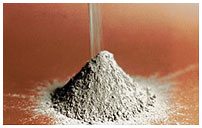 Portland
cement is the most common type of cement in general usage. It is a
basic ingredient of concrete, mortar and plaster. English engineer
Joseph Aspdin patented Portland cement in 1824, and it was named
after the limestone cliffs on the Isle of Portland in England
because its color is similar to the stone quarried there. It
consists of a mixture of oxides of calcium, silicon, and aluminum.
Portland Cement and similar materials are made by heating limestone
(a source of calcium) with clay, and grinding this product (called
clinker) with a source of sulfate (most commonly gypsum). When mixed
with water, the resulting powder will become a hydrated solid over
time. Portland
cement is the most common type of cement in general usage. It is a
basic ingredient of concrete, mortar and plaster. English engineer
Joseph Aspdin patented Portland cement in 1824, and it was named
after the limestone cliffs on the Isle of Portland in England
because its color is similar to the stone quarried there. It
consists of a mixture of oxides of calcium, silicon, and aluminum.
Portland Cement and similar materials are made by heating limestone
(a source of calcium) with clay, and grinding this product (called
clinker) with a source of sulfate (most commonly gypsum). When mixed
with water, the resulting powder will become a hydrated solid over
time.
High temperature applications, such as masonry ovens and the
like, generally require the use of refractory cement. Concretes
based on Portland cement can be damaged or destroyed by elevated
temperatures, but refractory concretes are better able to withstand
such conditions.
Aggregate
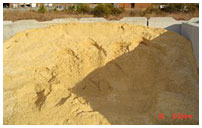 The
term "aggregate" denotes a wide range of granular materials that may
be used in the production of concrete, such as: The
term "aggregate" denotes a wide range of granular materials that may
be used in the production of concrete, such as:
Gravel
Crushed Stone
Natural Sand
Manufactured Sand
These are basically divided into two categories: Fine Aggregate
and Coarse Aggregate based upon their particle size.
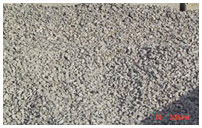
Fine Aggregates consist of particles smaller than 1/4", usually sand
or crushed stone
Fine Aggregates consist of particles smaller than 1/4", usually sand
or crushed stone
Coarse Aggregates are those with particle sizes larger than 1/4"
Aggregates make up 60% to 80% of the concrete volume
Chemical Admixtures
Chemical admixtures are materials that are added to the
constituents of concrete to either enhance its properties; either in
its plastic or hardened state, or to modify some specified and
desired chemical reaction within the concrete itself.
While the American Concrete Institute (ACI) defines what an
admixture is, ASTM sets the standards that an admixture must meet.
The ASTM sections concerning chemical admixtures are:
ASTM C 260 - Air-Entraining Admixtures
ASTM C 494 -
Type A - Water-Reducing
Type B - Retarding
Type C - Accelerating
Type D - Water-Reducing & Retarding
Type E - Water-Reducing & Accelerating
Type F - High-Range Water-Reducing (HRWR)
Type G - HRWR & Retarding
ASTM D 98 - Calcium Chloride
ASTM C 869 - Foaming Agents (for use in making Cellular Concrete)
ASTM C 1141 - Admixtures for Shotcrete
ASTM C 1017 - Admixtures for Use in Producing Flowing Concrete
ASTM C 979 - Pigments For Integrally Colored Concrete
Other types of admixtures, which are not listed in ASTM
specifications, but are just as valuable to the concrete industry,
are:
Microsilica - ACI 234R
Corrosion Inhibitors
Shrinkage Reduction
Hydration Stabilizers
Flowable Fill Additives
Most admixtures are batched into the concrete through dispensers
mounted at the concrete plant, while others may be hand dosed into
the ready-mix truck once the proper concrete consistency has been
confirmed. Most admixtures are metered into the mix in fluid ounces
per 100 pounds of total cementations.
Cement Testing
1. specific gravity test by
Le Chatelier pyrometer
2.Fineness Test
3.Setting time test
4. Soundness test
5. Strength test
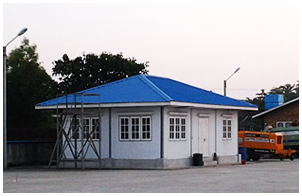 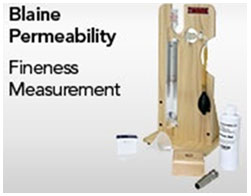 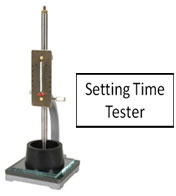
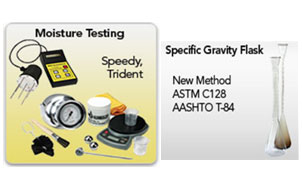 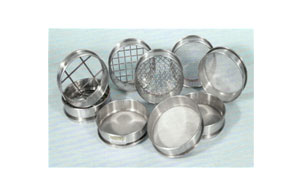 Aggregate
Testing Method Aggregate
Testing Method
1. Specific gravity Test
2. Sieve analysis Test
3. Surface Moisture Test
4. Absorbing Test
5. Finer material Test
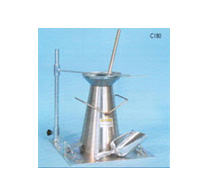 Fresh Concrete Quality Control Fresh Concrete Quality Control
Test method for fresh Concrete
1. Slump Test
2. Unit Weight Test
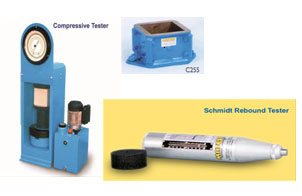 Harden
Concrete Quality Control Harden
Concrete Quality Control
Testing Method
1. compressive Test
2. Schmidt Rebound Test
|

